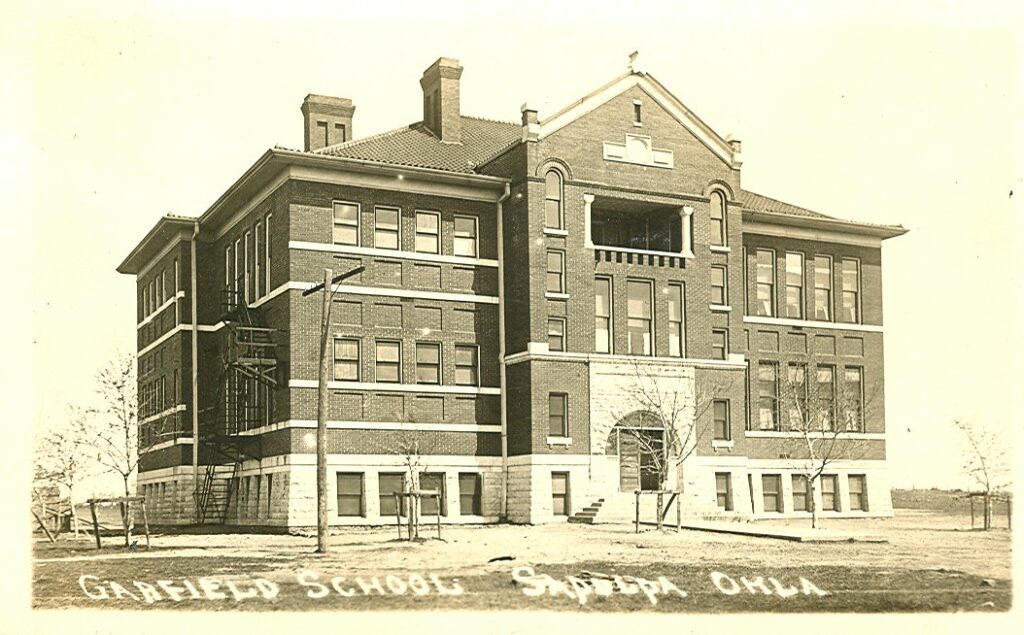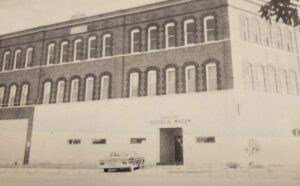Rachel Whitney
Curator, Sapulpa Historical Museum
The Great Depression affected everyone in the world. Big and small companies, rich and poor folks, healthy and sick, military and civilians across the globe were hit by the economic depression. Even the near-center of the 48-contiguous United States of Sapulpa, Oklahoma could not withstand the worldwide effects*.
*Note: of the 48-contiguous states, Lebanon, Kansas is the central location, which is less than 400 miles from Sapulpa.
In 1932, the Federal Government was dividing the supply of goods, including flour, among the states. Sapulpa had received 98,000 pounds of flour to distribute to the community. Over 700 citizens had applied for the flour. To each person, only 5 pounds were given.
Additionally, postage rates had increased 50% in 1932. The postage increased from 2 cents to 3 cents by July that year. Prices increased everywhere, and salaries were cut for every person. Almost all County employees had their salaries cut by 25%, saving the County $14,500 that year. That same month, City of Sapulpa employees had their salaries cut 10% (this was their second pay cut this year). Also, street lights were turned off in parts of town.
The City also experienced other issues with people not paying their water bills. Many individuals were waiting until the last minute, paying a singular dollar or two on their $5 water bill just to keep the water going. The City Manager said people were abusing the kindness of the City, and costing the town $50 to $100 a month*.
*Note: $100 in 1932 is about $2,000 today.
However, people kept struggling to get by. Citizens and City Officials were at their wit’s end. The public schools of Sapulpa were no different. This week in Sapulpa history, it was announced that the salaries of our teachers would be cut drastically.
On April 28th, a “drastic reduction in salaries for Sapulpa teachers, officers, and other school employees were made at the school board meeting.”
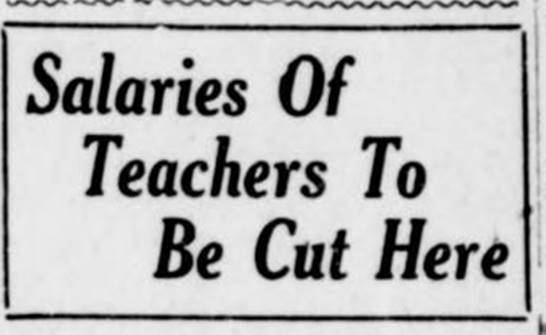
The School Board cut teacher salaries by 12.6% from last year. “The entire saving in the 1932-1933 budget over last year will be 15.2% or $14,000. Those receiving the highest salaries will take the largest reductions.”
“Less will be spent on athletics than in previous years. The instructors who coach football, basketball, wrestling and other sports will act as full time teachers, teaching five or six classes a day.” It was stated that coaching is an extracurricular activity after regular classes.
Furthermore, for the last three years, 1929-1932, Sapulpa schools spent less per student than any school system in Oklahoma. “Sapulpa school system has been operated on less money than any school in the state with approximately the same enrollment.”
April of 1932 was not the only time schools had to push through the Great Depression. Just two years later, E.H. McCune, Superintendent of Schools, announced that the school term may only last eight months due to a lack of funds. Officials were trying to obtain federal aid to keep the schools open. The Sapulpa schools budget had decreased 50% since 1929.
It was announced on April 17th, 1934 that schools would close that Friday, April 20th. The schools had hoped that they could receive the funds. “When word was received here that the fund would go only to aid weak schools in towns and districts under 5,000 population,” it was decided to close*.
*Note: Sapulpa, in 1934, had a population of a little over 10,000 citizens.
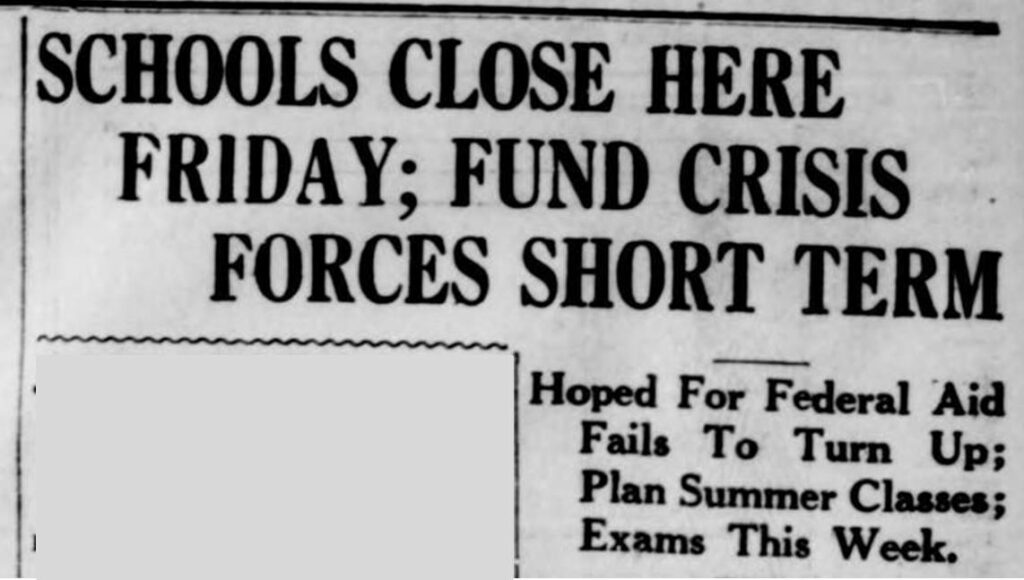
The closing of schools was postponed another week, however. False hope due to a misunderstanding made the schools close on April 27th, 1934. “Sapulpa, along with Henryetta and Picher, has been recommended to share in federal relief funds to the same extent as cities under the 5,000 population ruling,” is what was announced a week prior. But the funding did not come through.
“‘Sapulpa schools close tomorrow’” was announced the morning before closing.

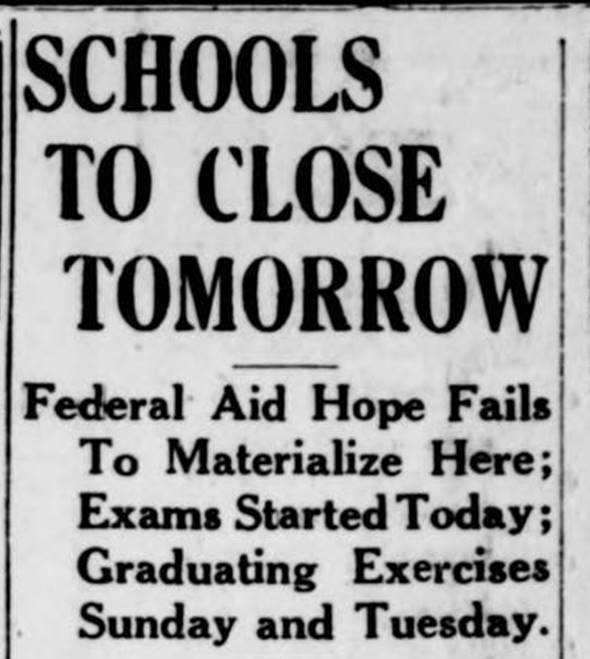
More devastating news about salary cuts arrived the following month. The school board announced severe cuts in salaries in the school systems. The board was determined to cut enough to ensure that the students would have a full nine months of schooling. They followed the state aid recommendations for salaries. Teachers would $80 to $100 a month. Principals went from a salary of $2,200 for the ten-month period would then receive $1,050. Similar cuts were made in the administration, as well, and only one teacher’s position had been eliminated.












